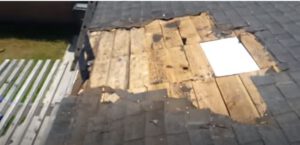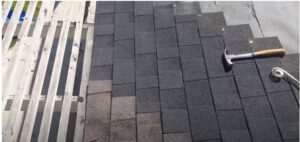How do I repair a damaged shingle roof on my Australian home?
 A sturdy roof is integral to the safety and comfort of your Australian home. However, it can experience damage over time due to harsh weather conditions, exposure to the sun, or simple wear and tear. Asphalt shingles, while popular for their cost-effectiveness and durability, are susceptible to such damage. This article explores a comprehensive step-by-step guide on repairing a damaged shingle roof in your Australian home, ensuring your living space remains secure and comfortable.
A sturdy roof is integral to the safety and comfort of your Australian home. However, it can experience damage over time due to harsh weather conditions, exposure to the sun, or simple wear and tear. Asphalt shingles, while popular for their cost-effectiveness and durability, are susceptible to such damage. This article explores a comprehensive step-by-step guide on repairing a damaged shingle roof in your Australian home, ensuring your living space remains secure and comfortable.
Understanding the Type of Damage
Before commencing any repair, identify the type of damage on your roof.
- Missing Shingles: High winds or severe storms can blow off shingles from your roof.
- Curled or Buckled Shingles: Over time, heat exposure and moisture can cause shingles to curl or buckle.
- Cracked or Broken Shingles: Falling debris, hail, or aging can crack or break the shingles.
The Importance of Safety Precautions
Remember, roof repairs pose inherent safety risks. Always prioritise safety by wearing sturdy footwear for grip, using safety ropes if necessary, and never working in adverse weather conditions.
Materials and Tools Needed for Roof Repair
For this DIY project, you’ll need replacement shingles, a roofing hammer, roofing nails, a pry bar, a utility knife, and roofing sealant. If the damage is extensive, consider renting a roofing safety harness for added safety.
Repairing Missing Shingles
- Inspect the Area: Ascertain the extent of the damage. A missing shingle leaves a clear gap, but inspect the surrounding shingles for any unapparent damage.
- Prepare the Replacement Shingle: Using a utility knife, round the back corners of the replacement shingle. This makes it easier to slide into place.
- Install the Shingle: Slide the new shingle into the gap, ensuring it aligns with adjacent shingles. Secure it with roofing nails.
- Apply Roofing Sealant: Apply a generous amount of roofing sealant under the replaced shingle and around the nail heads to prevent water ingress.
Repairing Curled or Buckled Shingles
Inspect and Prepare the Area: Identify the curled or buckled shingles. During a warm day, when they are more malleable, straighten the curled section(s).
- Apply Roofing Sealant: Apply a generous amount of roofing sealant beneath the curled or buckled area.
- Secure the Shingle: Press down the treated area and secure it with roofing nails. Apply more sealant over the nail heads.
Repairing Cracked or Broken Shingles
- Identify the Damage: Locate the cracked or broken shingle. A large crack or break might necessitate a complete shingle replacement.
Apply Roofing Sealant: If the damage is minor, apply roofing sealant to the crack or break.
Replace the Shingle: For extensive damage, remove the broken shingle and replace it with a new one, following the method outlined in the ‘repairing missing shingles’ section.
Professional Assistance and When to Seek It
 Roof repair is a potentially dangerous task, requiring a degree of expertise and physical ability. If the damage is severe, affects a large area, or if you’re uncomfortable performing the task yourself, seek the services of professional roofers. They possess the necessary skills, experience, and tools to safely and effectively complete the job.
Roof repair is a potentially dangerous task, requiring a degree of expertise and physical ability. If the damage is severe, affects a large area, or if you’re uncomfortable performing the task yourself, seek the services of professional roofers. They possess the necessary skills, experience, and tools to safely and effectively complete the job.
Regular Roof Maintenance
To maximise the lifespan of your roof, conduct regular maintenance. Clean the roof periodically, removing any debris, and inspect for early signs of damage. Regular gutter cleaning is also essential in maintaining the overall health of your roof.
Conclusion
While roof repair can seem intimidating, understanding the damage type and following these guidelines will equip you to handle minor repairs confidently. Always prioritize safety and remember that professional roofers are available to assist when the task feels overwhelming. Regular roof maintenance is also vital in preventing extensive damage, ensuring that your Australian home remains secure and comfortable under its sturdy roof.